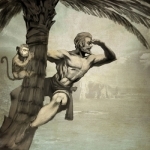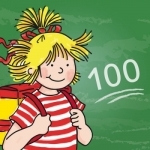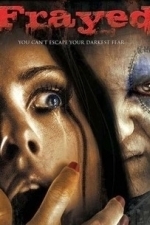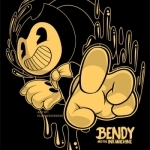
The Island:Brave Heart
Games and Sports
App
The Island,Man in the Wild,Amazing Adventure.... This is a game about exploring and surviving on a...

Daily Bible Inspirations – verses & devotions
Reference and Lifestyle
App
Get inspirational, uplifting Bible verses and devotions – complete with stunning photos –...

Domino's Pizza Türkiye
Food & Drink
App
TURKEY’S TASTIEST and MOST POPULAR PIZZA CHAIN! With our revamped app, it is now much more easier...

Connie math educational game 2nd grade
Education and Games
App
Connie Fun Learning: Everything for second grade: Math. Developed with pedagogical support. ...
Gareth von Kallenbach (980 KP) rated John Wick. Chapter 4 (2023) in Movies
Mar 18, 2023
It is crazy to think that in the world of John Wick, after how many bodies he has left in his wake over the last three movies, that anyone would bother even going after him. And yet, this is a popcorn action film in the trustiest since because if you aren’t suspending disbelief and enjoying the ride, you aren’t doing it right.
While it's normally John Wick against the world, this time he seeks help from old friends who help him reign death and destruction upon anyone in his way as he attempts to kill his way to freedom from the “high table.” It is this comradery that sets this film apart from its predecessors. For the first time since the first film, we actually get character development and emotional investment for Wick and his friends.
Most notably joining Keanu Reeves this time is Donnie Yen of Ip Man fame. Channeling traditional martial arts films, Yen plays a blind master assassin in his own right, who like Wick, was retired, but was brought back to save his family and hunt down his friend John Wick. Fans of his martial arts films will recognize Yen’s movement that is both graceful and precise as a dance. Additionally, Hiroyuki Sanada (Bullet Train, The Twilight Samurai), brings his strong and stoic presence as a loyal friend to help John Wick, despite the potential danger it will bring to him and his family. While Shamier Anderson (Race, Bruiser) introduces a new character to the series, tracking John Wick to score a payday. These three delightfully add story depth to series mainstays Ian McShane and Laurence Fishburne as we dive deeper into the lore of “everything under the table.”
Opposite them, Bill Skarsgard, plays a ranking Marquis, given the power to hunt down Wick and make an example of all those who fail to “serve under the high table.” He is exactly the type of pompous and ruthless villain that we all love to hate. It is through the exhibition of his power and arrogance that we learn more about the lore and rules of this world of assassins, which is intriguing and entertaining as John Wick must navigate not only people trying to kill him but also the “old rules” on his path to freedom.
These fresh faces and story elements help the John Wick series to feel more enjoyable than ever, while, fans of martial arts films, samurai films, and a certain 1979 cult classic, will recognize the various homage paid in John Wick Chapter 4. Making this the best addition to the series since the first film.
4.5 out of 5 stars

Bila Yarrudhanggalangdhuray
Book
Gundagai, 1852 The powerful Murrumbidgee River surges through town leaving death and destruction...
Kristy H (1252 KP) rated Baby Teeth in Books
Mar 11, 2019
"Every win for Hanna was a you-lose for Mommy."
I'd been putting off reading this book for a bit because I'd heard that it was creepy and disturbing, and I can confirm that yes, it is both of those things. Ha. I can't say I'm particularly glad that I read it, though it's an interesting read and certainly different. It mostly held my interest, but after all the hype, I found myself a little letdown: there really wasn't all that much to the story. I found myself waiting that twist, that something special that never came.
Still, Stage does an excellent job of capturing Hanna's child-like voice and telling a story from her unique perspective. The tale alternates between chapters from Hanna's perspective and then Suzette's, and I can't deny that you'll find yourself a little freaked out after reading Hanna's. The book is eerie and disturbing; it's hard to believe, yet not, as it's certainly effectively told. There are some tough moments to read and it's definitely not always for the faint of heart.
I had a tough time empathizing with our adult characters--our cast is mainly limited to the family unit, and I didn't care much for either Alex or Suzette. We are probably supposed to feel bad for Suzette, as she's struggling with both Hanna and failing health (having had Crohn's disease since childhood). And I did, at times, but she talked so much, and kept rehashing things, and I just wanted to shake her to wake up, get a grip, and deal with everything. So yeah. And her husband was just clueless and ugh.
Hanna was a much tougher one--as a parent, I found this one hard. Of course, you want to believe and care for a small child. Yet, you can also empathize with a mom who feels like they need a break from their child. I enjoyed how the book made you think about these kind of things as Hanna started to escalate. What would you do in this situation? How did things get to this point? That's where it is interesting. Some of the best parts are the oozing tension and unease that pervade the whole novel.
Unfortunately, it doesn't completely capitalize on that uneasiness, leaving you a little deflated by the end. I was actually hoping for a little more creepiness, a little less character-study. I definitely enjoyed pieces of this one, and I'd still recommend it due to how different it is.
I received a copy of this novel from the publisher and Netgalley in return for an unbiased review (thank you!).
Hazel (1853 KP) rated The Joyce Girl in Books
Dec 14, 2018
Winner of the Impress Prize for New Writers 2015, Annabel Abbs creates a fantastic work of historical fiction based upon the life of Lucia Joyce. Although the titular character may be unheard of within the general public, her father will be known amongst the majority of readers. James Joyce, the eccentric author of<i> Ulysses</i> and <i>Finnegan’s Wake</i>, travelled around Europe with his family until settling in Avant-garde Paris, 1928. His daughter, Lucia, an ambitious, talented dancer describes the unconventional life as a child of Mr. Joyce, its ups and downs, and inevitable ruinous breakdown.
<i>The Joyce Girl</i> begins in Küsnacht, Zurich where Lucia is receiving treatment from Dr. Carl Jung – another well-known name; this novel is full of them. Struggling to come to terms with her current mental ill health and supposed repressed memories, Jung encourages Lucia to write her memoirs in order to learn of the events that led to this current predicament. Starting from 1928, aged 21, Lucia describes her life to Jung and the reader in brutally honest detail.
The unusual Irish family went through various successes and traumas in the intervening years, creating a humorous and emotional story. Lucia’s brother, Giorgio, caused the family enough problems without adding in the devastating heartache Lucia suffers from men who do not reciprocate her love. One of these lovers is the famous Samuel Beckett (<i>Waiting for Godot</i>, 1952), the first man Lucia falls for. It is fascinating to learn of the multiple connections these notable names had with each other. Although in retrospect it makes sense that the literary and artistic crowds would stick together.
From Lucia’s memoirs Jung formulates that the Joyce parents were extremely controlling, not giving Lucia the opportunity to live her own life – particularly within her dancing career. However, Jung still maintains that Lucia experienced emotional trauma and is insistent on retrieving those memories. What he eventually discovers will shock and possibly sicken the reader.
Through enormous amount of research, Annabel Abbs has put together a likely account of the Joyce family, particularly Lucia’s life. Using existing biographies, original letters and professional opinion, Abbs devises a logical narrative for the unfortunate dancer. Drawing upon knowledge of other literary greats and artists of the era, <i>The Joyce Girl</i> can be easily believed to be a true account, although doubtlessly some scenes must be based upon imagination.
<i>The Joyce Girl</i> will attract historical and romantic novel enthusiasts, providing an enjoyable, thought capturing story, as well as an opportunity to learn. Whether you are aware of James Joyce’s works, or even Lucia herself, <i>The Joyce Girl</i> is bound to capture your attention and draw your mind into the European life during the early 1930s. Although only her debut novel, Annabel Abbs comes highly recommended and it will be interesting to see what direction she has decided to take in her shortly expected second novel.
Gareth von Kallenbach (980 KP) rated Frayed (2007) in Movies
Aug 14, 2019
Sadly in such a competitive field, many struggle to be given that shot, and never get a chance to see their dreams reach fruition. Thanks to Screamfest, (www.screamfest.com) independent horror film makers are given their chance to submit their works to be included in an annual competition.
The competition screens films for fans and judges, and awards prizes to the top films of the competition. This is ideal for filmmakers as not only do they get publicity and an audience for their work, but a chance at a distribution deal and future work.
This year a local Washington State based company (lock It Entertainment) called has seen the culmination of years of work realized as their film “Frayed” has been accepted into the competition and stands out as one of the most promising films of the competition.
The film is set in a small town in Washington State where a small boy named Kurt brutally kills his mother and is confined to a mental institution. It is learned that Kurt is trapped in his mind and that he may not ever be able to return to normalcy.
The film then moves to the present day where Kurt is scheduled to be transferred to a facility that is better suited to his condition, as he has grown beyond any help. His father, the local Sheriff, Pat Baker, (Tony Doupe’), is struggling with the decision as he knows that it is the right thing to do, but finds it hard to sign his son away to the care of another institution.
At home, Sheriff Baker returns to find his daughter Sara (Alena Dashiell), on her way to a camping trip and his new wife Jolene (Kellee Bradley) frustrated over the boundaries that Sara and her friends have.
As if his day could not get any worse, Sheriff Baker learns that Kurt has escaped during his move, and is leaving a trail of carnage in his wake.
Torn between his loyalty to his son and his duty to protect the community, Sheriff Baker mounts a manhunt to capture Kurt unaware that a security officer from the hospital named Gary (Aaron Blakely), is in hot pursuit of Kurt and is witness to his deadly brutality firsthand.
What follows is a tension filled race against time where all of the central characters are caught up in an intertwining web of terror.
The film is surprisingly effective as at first I thought I was in for a “Halloween” style film of the psycho killer on the loose. Instead the film cleverly mixes the slasher film genre with ample amounts of drama and psychological drama.
Norb Caoili and Rob Portmann who co-wrote, co-directed, and co-produced the film along with Executive Producer and co-writer KurtSvennungsen, have made an entertaining film that packs plenty of horror staples along with some effective twists and turns that makes “Frayed” a surprisingly original and effective thriller.
Gareth von Kallenbach (980 KP) rated Bendy and the Ink Machine in Video Games
Aug 14, 2019
Similar to other games with an episodic structure (e.g.: Alan Wake and Life is Strange), BatIM uses short levels to advance the story line in some intriguing ways. Love of Exploration will be your saving grace in this game, as each area requires some in order to advance to the next. The game is not fast-paced. On the contrary, it’s meant to be a slow experience for the player with sparse combat scenarios present only to add a brief moment of action. Your actions as Henry are very limited, as is his speed. With 5 chapters, the gameplay time is at just about hours, and the game uses every minute to pull you deeper into the dark world it has created.
I reviewed BatIM for the Nintendo Switch and found that the game was somewhat held back by the platform’s technical limitations. The biggest drawback I found was that textures would often blur and have jagged edges, with the shaky 30FPS frame rate just feeding fuel to this fire. This is a detriment to gaming’s purpose in keeping the players immersed in the environment. BatIM is meant to be tense, but I often found myself dispelled of the illusion due to blurry visuals and dropped frames. With a game designed so well, how unfortunate that this be its biggest flaw. Maybe this can be patched out, but we can only hope at this point.
BatIM developer, theMeatly Games, may have taken inspiration from Five Nights at Freddy’s as the gameplay and overall genre of the games are quite similar. The world is conceptualized using objects such as books and tapes found within the game instead of long cut scenes that can tend to take you out of the moment rather than add to it in games like these. As you delve deeper into the oubliette of a workshop, you’ll find that the gameplay is perfectly paired with the game’s sick and twisted visuals, proving that BatIM delivers on every level.
Bendy and the Ink Machine is available now on all major platforms.




